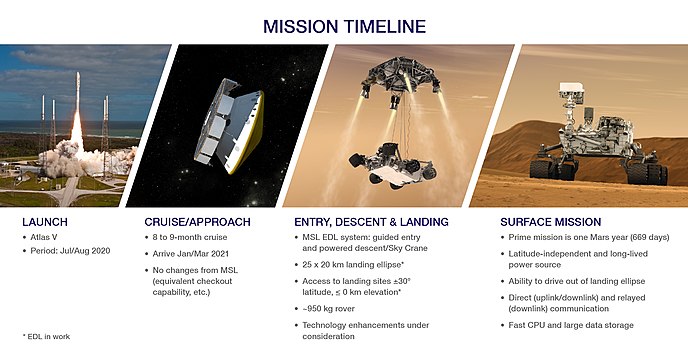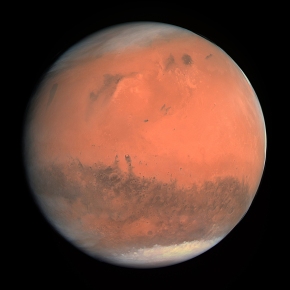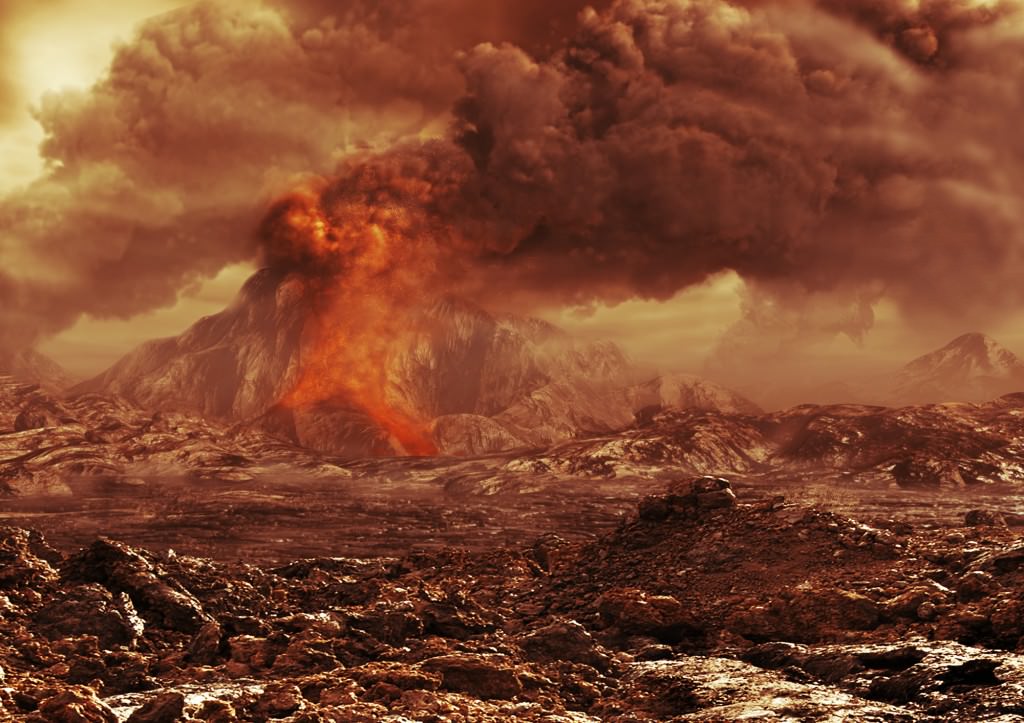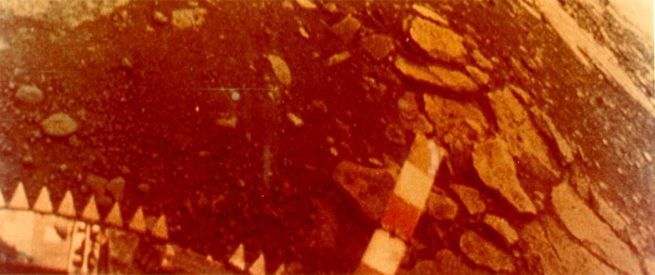Mars, our red-tinted planetary
neighbor, has long attracted human curiosity. Due to its unusual color, it was
named after the Roman god of war. Although it is so much smaller than our
planet (only about half Earth’s diameter and one-tenth its mass), it shares
certain Earth-like features, particularly volcanoes and a great canyon. These
structures, however, dwarf their earthly counterparts. Nevertheless, there are
also the telltale signs of the past presence of water: dried riverbeds and
floodplains, and minerals that develop in water.
–
For centuries, humans have wondered about the possibility of life on Mars, and the first such “evidence” was actually due to a misunderstanding. In 1877, when Italian astronomer Giovanni Schiaparelli (after whom craters on Mars and the Moon are named) studied the Martian surface with a telescope, he saw channels and published his findings. However the Italian word for channel, “canali,” was later mistranslated into the English “canal,” suggesting that these structures had been deliberately constructed – certainly by an intelligent Martian life form. In 1908, the American astronomer Percival Lowell expanded on this idea by publishing the book, “Mars as the Abode of Life,” in which he described a sophisticated Martian civilization using these canals as a water transportation mechanism. Other scientists of the time sought ways to signal our presence to this supposed Martian civilization.
In 1938, yet another piece of “evidence” for Martian life was due to an even more drastic misunderstanding. Orson Welles aired a radio dramatization of H.G. Wells’ novel War of the Worlds, with voice actors telling of a meteor crashing into a New Jersey field and Martians coming out of a spacecraft at the crash site. The announcer on the program described the Martians in great physical detail and narrated as these creatures continued on to destroy thousands of National Guardsmen, before dispersing poisonous gas. Two more spacecraft landed in Chicago and St. Louis, and thousands of people were running for their lives. The show was, of course, fictional. However, millions of Americans, who had tuned in to the radio late, mistook the program for actual news. Panic ensued as people across the nation tried to flee, causing traffic jams everywhere and countless frantic calls to police. Although the situation eventually resolved itself, public curiosity about Martian life was piqued. Novels and movies were written about the subject, many of which depicted Martians as the stereotypical “little green men.”
Questions were finally answered in
1965, when Mariner 4 flew by Mars, photographing its surface and bringing home
no evidence of intelligent life – or any life at all. Viking 1, which landed on the Martian surface in 1976, further
confirmed the planet’s lifelessness. However, an image taken by the Viking 1
orbiter revealed the apparent presence of a giant human face in the Cydonia
region. This “Face on Mars” became the target of much speculation, with some considering
it evidence of a lost Martian civilization – perhaps even one that had visited
Earth at some point. However, more detailed images taken over two decades later
(by several spacecraft), revealed the “Face on Mars” to be a mountain range
with little resemblance to a human face, thus virtually ending speculation.
–
–
Despite centuries of false hope,
the answer to the question, “Is there life on Mars?” is a surprising “Yes.”
However, this life does not take the form of little green men or poisonous
gas-wielding armies. These organisms are but tiny microbes – and they come from
Earth. We humans are entirely responsible for their existence on Mars. Although
scientists have gone to great lengths to search for life on Mars without
contaminating the red planet with Earthly organisms, some risk of contamination
was inevitable. NASA’s Curiosity Rover, which landed on Mars in 2012, carried
some heat-resistant extremophiles. By analyzing the cloths used to wipe down
the rover, scientists were able to determine the names of the species, which
include Actinobacteria, Alphaproteobacteria,
Nitrososphaeraceae, and spores of Melanommatales.
These organisms are the Martians of today.
Nevertheless, the search for Martian-based life continues on, both in
the scientific community and in our imaginations. Even though speculations of
intelligent Martian life have been debunked, it is still fun to read science
fiction novels about little green men or daydream about exploring the ruins of
a long-lost Martian civilization.
Do you think we will one day find evidence of Martian life (that didn’t
come from Earth)? What about elsewhere in the Solar System?
I’ll conclude this blog
post with an appropriately-titled
song.
Sources:
Bennett, Jeffrey O., et al. The Cosmic Perspective. Pearson, 2018.
“Cydonia
(Region of Mars).” Wikipedia, Wikimedia Foundation, 6 Feb. 2019. Web.
“Life on
Mars.” Wikipedia, Wikimedia Foundation, 26 Feb. 2019. Web.
Niiler,
Eric. “Life on Mars? The Search for Signs Goes Back Centuries.” History.com,
A&E Television Networks, 8 June 2018. Web.
Twilley,
and Nicola Twilley. “There’s Already Life on Mars, and We Put It There.” The
New Yorker, The New Yorker, 19 June 2017. Web.



















